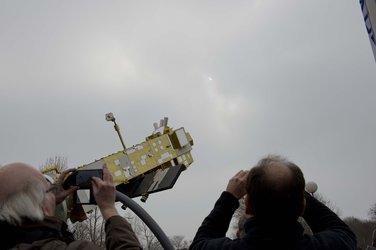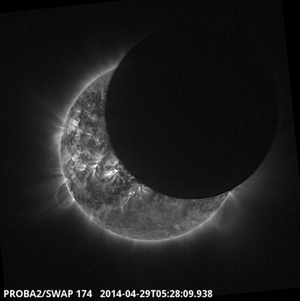

Digital eclipse by KU Leuven's simulation software
Thank you for liking
You have already liked this page, you can only like it once!
Computer models are able to simulate the solar corona and create 'a digital eclipse'. Released in June 2025, the images from the Proba-3 mission will help refine these models to compare and adjust variables to match real images.
This image shows the simulation of the solar corona on 23 May 2025. The model's results correspond to magnetic field lines connected to the surface of the Sun, coloured by the speed of the solar wind, and using a transparency filter to see multiple overlapping lines.
The simulation matches closely the high-density streamers shown in Proba-3 images. However, coronal models lack detailed information on the Sun's polar zones leading to lower quality in the predictions in these areas.
This simulation was obtained using KU Leuven’s ‘COCONUT’ software. This software is one of multiple solar coronal models integrated within ESA's Virtual Space Weather Modelling Centre (VSWMC). It can be combined with a vast array of computer models describing other physical processes connecting the Sun to the Earth.
All together, they help to offer a comprehensive image of the solar activity impacting our planet and help citizens and industry prepare against them.
-
CREDIT
T. Baratashvili, KU Leuven, Belgium -
LICENCE
ESA Standard Licence

Where space weather starts

Solar eclipse at ESTEC

Proba-2 partial solar eclipse 2

Proba-2 partial solar eclipse 1

